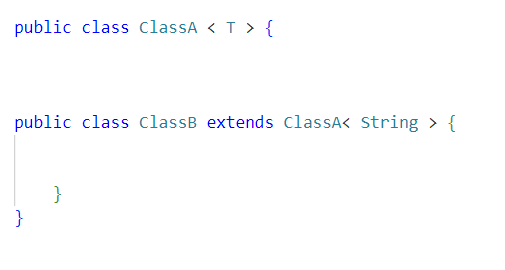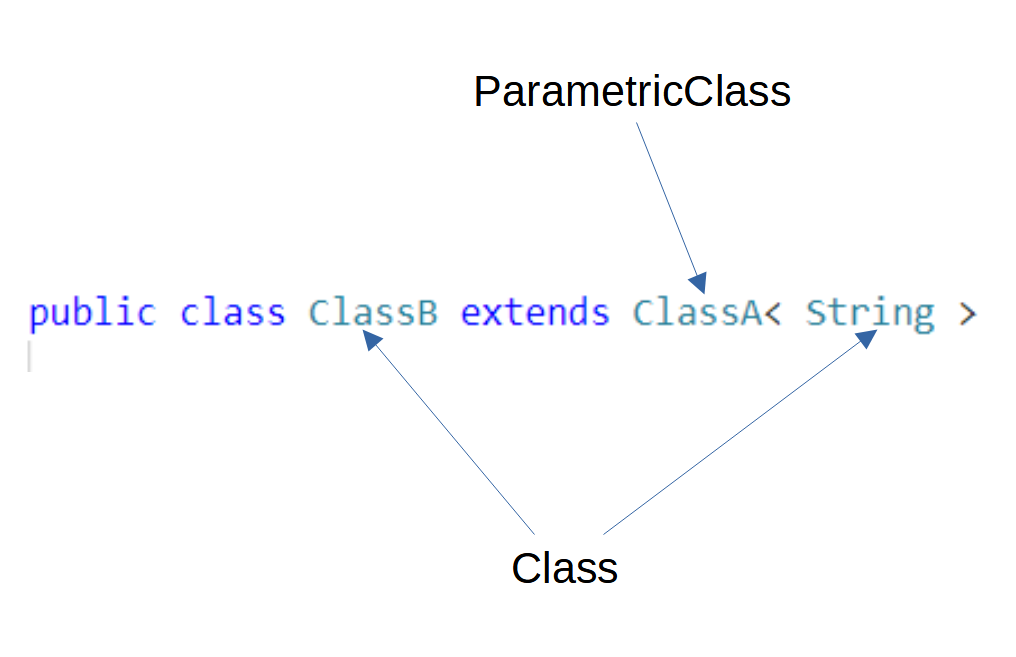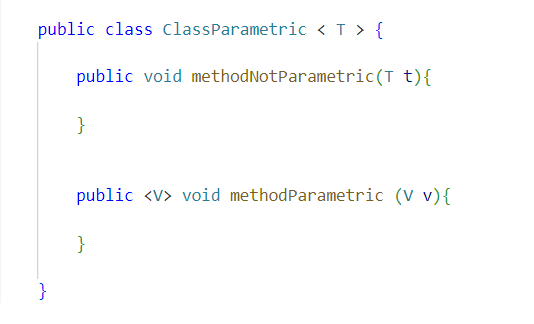Introduction
In Java generic types allow you to write a general, generic class (or method) that works with different types, allowing code reuse.
But their modeling and how it works can be difficult to understand. Let’s take an example.
Generic class
public class ClassA<T>
Here, ClassA is a generic class because there is one generic type T.
One can not use ClassA without specifying the generic type.
ClassA<Integer> class1 = new ClassA<Integer>;
ClassA<String> class2 = new ClassA<String>;
class1 and class2 are variables of type ClassA, but this time ClassA doesn’t have a generic type but String or Integer.
So, how do we represent all that?
We have 5 new traits in our meta-model :
-
TParametricEntityis used by all parametric entities. It can be aParametricClass,ParametricMethod, andParametricInterface. -
TConcretisationallows one to have a link between twoTParametricEntity. ATParametricEntitycan have one or more concretizations with otherTParametricEntity. EachTParametricEntitythat is a concretization of anotherTParametricEntityhas a genericEntity. -
TConcreteParameterTypefor concrete parameters. -
TGenericParameterTypefor generic parameters. -
TParameterConcretisationis the same asTConcretisationbut instead of twoTParametricEntityit hasTConcreteParameterandTGenericParameterType.TGenericParameterTypecan have one or more concretisations andTConcreteParameterTypehas generics.
A TParametricEntity knows its concrete and generic parameters.
ParameterType uses the TWithInheritance trait because in Java we can do the following: <T extends Object> and <? super Number>.
For the first, it means that T can be all subclasses of Object and for the second, it means Number and all its superclasses or interfaces (Number, Object, Serializable).
ParameterType also uses the TThrowable trait because we can have a genericException so ParameterType should be considered like it.
public interface GenericThrower<T extends Throwable> {
public void doThrow() throws T;
}
Let’s describe an example

If we take the first class. We have a ParametricClass with one ParameterType name T.

For the second class, we have a class that extends a parametric class with one parameter named String.
String here is a class.
It is not a ParameterType anymore.

So, what is the link between the two parametric classes and the parameters T and String?

We have here a Concretisation.
ClassA with the parameter T has one concretization and the parameter T has one parameter Concretisation which is String.
If we take back our first example:
public class ClassA<T>
ClassA<Integer> class1 = new ClassA<Integer>
ClassA<String> class2 = new ClassA<String>
We have three ParametricClass, one ParameterType and two types (String and Integer).
T is our ParameterType and has two ParameterConcretisations: String and Integer.
We can say that T is generic and String and Integer are concrete because we know what they are: classes.
ClassA with the ParameterType T (ClassA<T>) also has two concretizations.
These are ClassA<Integer> and ClassA<String>.
The three different classA know their parameters. T is in genericParameters. String and Integer are in concreteParameters.
A class is generic if it has at least one ParameterType.
We can have concretization of a parametric class that is also generic. See the example below:
public class ParametricClass<T, V, K, Z>
public class ParametricClass2<Z> extends ParametricClass<String, Integer, Integer, Z>
The second ParametricClass has one ParameterType, so the class is generic. The four parameters (T, V, K, Z) have each a concretization (String, Integer, Integer, Z). Even if Z is still a ParameterType.
ParametricClass2 has for superclass ParametricClass, which has for generic entity ParametricClass with 4 ParameterTypes.
Generic method

Let’s see what we have here. First of all, we recognize a ParametricClass with one ParameterType. This class has two methods. One is a regular method and the second is a parametricMethod. The first one isn’t generic because when the class is concretized, the ParameterType T will become String, Integer, Animals… and it will be the same for the method. The parameter of the first method depends on the class and this is not the case for the second method. That is why the second method is generic, not the first one.
Example with Pharo
public classA<T>
public classB extends classA<String>
This is how we can represent this in Pharo.
classAgen := FamixJavaParametricClass named:'ClassA'.
t := FamixJavaParameterType named:'T'.
classAgen addGenericParameter: t.
classAcon := FamixJavaParametricClass named:'ClassA'.
string := FamixJavaClass named:'String'.
classAgen addConcreteParameter: string.
FamixJavaConcretisation new concreteEntity: classAcon ; genericEntity: classAgen.
FamixJavaParameterConcretisation new concreteParameter: string ; genericParameter: t.
classB := FamixJavaClass named:'ClassB'.
FamixJavaInheritance new subclass: classB ; superclass: classAcon .
Conclusion
In this post, we have seen how generics types are modeled with VerveineJ and Moose for code analysis.
